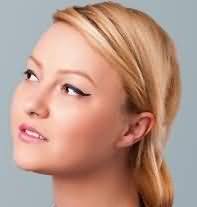HEAD LICE
HEAD LICE
Head lice are tiny insects that live in hair and lay eggs (nits) on the base of hairs. Head lice are harmless, but their bite causes intense itching. They can be transmitted by close personal contact or by sharing items such as combs and hats. Lice can be treated using over-the- counter insecticide medications.
These are not suitable for everybody, so a pharmacist should be consulted first. Alternatively, lice can be removed by repeatedly combing the hair with a special comb.
All family members should be treated to prevent reinfestation
Othere related diseases
BRUISE
A bruise is a discolored area under the skin that is caused by bleeding from small blood vessels in the underlying tissues. Over a few days, the bruise graduall...
CELLULITIS
Cellulitis is a bacterial infection of the deeper layers of the skin and the underlying tissue. It usually affects the lower legs but may occur anywhere, includ...
CHILBLAINS
Also called pernio, chilblains are itchy, painful swellings on the fingers or toes that occur as a result of the excessive narrowing of small blood vessels unde...
CHLOASMA
Also known as melasma, chloasma is a skin condition is which dark patches appear on the face, mainly on the forehead, nose, and cheeks. Exposure to sunlight mak...
CLUBBING
In clubbing, the fingertips and ends of the toes become broader, thicker, and bulbous, and there is increased curvature of the nails so that they look like the ...
COLD SORE
Cold sores are small blisters that form around the mouth or on the lips. They are caused by the herpes simplex virus. The first attack of the virus may cause a ...
DANDRUFF
Dandruff is a harmless condition in which dead skin is shed from the scalp, accumulating in the hair and sometimes causing itching. It is commonly due to seborr...
ECZEMA AND DERMATITIS
Contact dermatitis Dyshidrotic eczema (pompholyx) Seborrheic dermatitis Both eczema and dermatitis are terms that refer to an inflammation of the skin, which...


